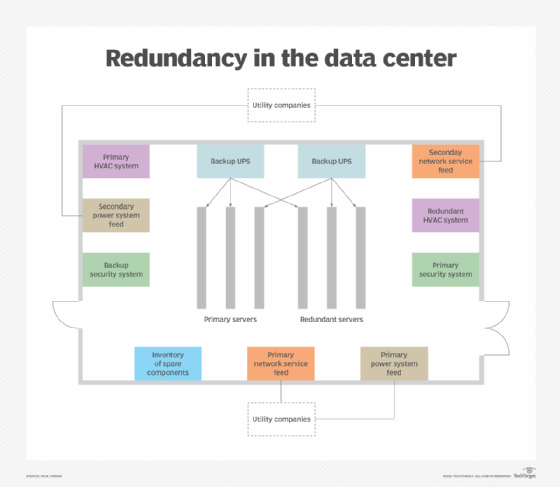Explained: If a Company Goes Bust Who Pays Redundancy in the UK?
Explained: If a Company Goes Bust Who Pays Redundancy in the UK?
Blog Article
Investigating the Interaction Between Firm Redundancy and Organizational Flexibility for Future Growth
In the dynamic landscape these days's business world, the intricate partnership between firm redundancy and organizational flexibility emerges as a crucial variable for sustained development and success. Companies commonly face the difficulty of striking a delicate balance in between maintaining a degree of redundancy to mitigate dangers and cultivating adaptability to react promptly to the ever-evolving market demands. This fragile interaction holds the essential to not just surviving in rough times yet also prospering despite uncertainty. As we check out the complex dimensions of this interplay, fascinating insights into exactly how companies browse these complexities to lead the means for future growth await.
Value of Business Redundancy
Business redundancy is an essential element that improves business durability and alleviates functional threats. By including redundancy measures within the organizational structure, business can much better withstand unanticipated disruptions and changes in business setting. Redundancy acts as a strategic buffer, enabling companies to adapt and respond properly to unexpected difficulties without jeopardizing crucial procedures.
One secret aspect of the importance of firm redundancy is its duty in making sure continuity during times of situation. When confronted with unexpected changes or emergency situations, redundant systems, resources, or employees can tip in to maintain crucial features and stop widespread disturbances. This connection not only safeguards the firm's track record and customer trust fund however also decreases monetary losses and functional downtime.

Strategies for Organizational Adaptability

Another critical technique is investing in modern technology and infrastructure that can support adaptability and scalability. Carrying out electronic tools, automation, and data analytics can enhance operations, boost efficiency, and give valuable insights for notified decision-making. Moreover, producing versatile business structures that permit fast modifications to market characteristics and client requirements is necessary for remaining affordable in a rapidly evolving environment. By proactively identifying possible disturbances and possibilities, companies can proactively flourish and adapt in an ever-changing business landscape.
Harmonizing Redundancy and Versatility
Achieving an unified equilibrium between functional redundancy and business versatility is extremely important in navigating the intricacies of a vibrant company setting. Striking the right balance in between redundancy and flexibility is a delicate process that needs a deep understanding of the company's goals, market characteristics, and threat tolerance.
To achieve this balance, companies need to conduct regular assessments of their operations to recognize areas where redundancy is necessary for risk reduction and where flexibility can drive innovation and development. Applying adaptable frameworks, promoting a culture of continual understanding and improvement, and encouraging open communication throughout all levels of the company are essential techniques to integrate redundancy and versatility efficiently. By straightening these 2 important aspects, business can position themselves for lasting development and success in an ever-changing business landscape.
Study on Adaptation Success
In taking a look at instances of effective business adjustment, it ends up being noticeable that the interplay between functional redundancy and adaptability is a specifying aspect in shaping durable organizations. One engaging study is that of Netflix. At first a DVD rental solution, Netflix showed amazing flexibility by transitioning into a streaming platform when digitalization interrupted the industry. By purposefully purchasing modern technology and material creation, Netflix not just survived however thrived in a quickly advancing market. One more standout instance is Amazon. Starting as an on-line bookstore, Amazon constantly adjusted its company version, expanding right into varied industries such as cloud computer and expert system. This adaptability enabled Amazon to remain in advance of competitors and satisfy transforming consumer demands. Last but not least, Adobe offers a notable image of successful adaptation. The firm changed from offering software program licenses to a subscription-based model, making sure reoccuring revenue streams and improved consumer involvement. These study emphasize the value of operational redundancy coupled with organizational versatility in cultivating lasting development and competitiveness. Recommended Reading
Structure Strength for Future Development
Structure strength for future development needs a calculated positioning of functional procedures with market characteristics and arising patterns. Business should adapt to transforming environments by fostering a society of adaptability, advancement, and constant enhancement. Resilience entails not just getting better from problems but additionally proactively getting ready for future difficulties. One essential aspect of structure durability is purchasing robust risk management strategies to alleviate prospective disruptions. This includes circumstance planning, Extra resources diversifying supply chains, and creating backup plans for different backups (who pays redundancy money).
Moreover, promoting solid connections with stakeholders, such as consumers, workers, distributors, and the community, is essential for preserving and weathering unpredictabilities trust and assistance throughout turbulent times. Efficient interaction and transparency play a crucial duty in building durability, as they aid align expectations and assist in cooperation in browsing uncertainties.
Additionally, companies require to prioritize knowing and advancement campaigns to upskill staff members and equip them with the required devices to adjust to transforming circumstances. By investing in their workforce, business can improve their flexibility and dexterity, inevitably strengthening their resilience for sustainable future growth.
Final Thought

In the vibrant landscape of today's company globe, the elaborate partnership between business redundancy and business adaptability arises as a crucial aspect for continual growth and success. Business usually face the obstacle of striking a fragile balance between keeping a degree of redundancy to reduce dangers and cultivating adaptability to respond quickly to the ever-evolving market you could try this out needs.To achieve this balance, business require to perform regular assessments of their operations to determine locations where redundancy is essential for risk mitigation and where versatility can drive advancement and development.In verdict, the interaction between company redundancy and organizational versatility is vital for future development. Building resilience through a combination of redundancy and versatility will make sure that business are prepared for the obstacles of the future.
Report this page